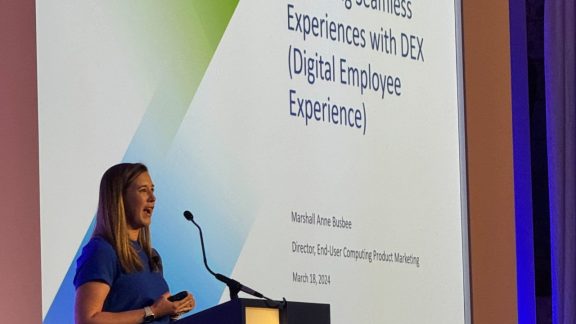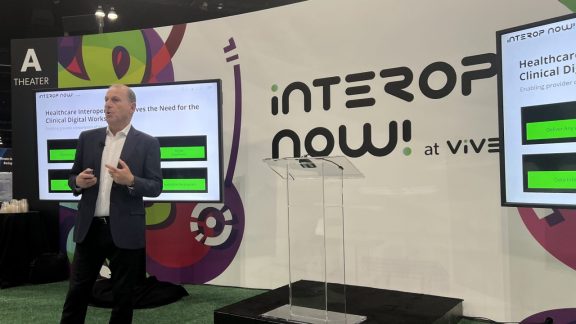By Shawn Bass, senior director, strategy and planning, End-User Computing, VMware
With Windows 10 set to release on July 29, it’s a great time to start thinking about Windows 10 adoption in your organization. Listed below are the top reasons why I believe Windows 10 will be the fastest-adopted version of Windows in the enterprise and why VMware’s EUC products have an important role in your Windows 10 plans. Our AirWatch teammates also put together a valuable blog titled “10 Things IT pros should know about Windows 10” which is a great read that I highly recommend.
Microsoft has done a number of things that could lead to quick adoption of Windows 10 in the enterprise, including:
- Free (or nearly free) Upgrade: For the first time, Microsoft is making the upgrade to Windows 10 free of charge to consumers. While this doesn’t apply to business customers, those under SA will have upgrade rights to Windows 10. Making Windows 10 free to consumers is an insightful strategy to get workers to use Windows 10 on their home computers, which will then increase their expectations of the technology upgrade at work.
- Near Seamless Upgrades: Windows 10 will be easily upgradable in-place for users running Windows 7/8/8.1. Building this into task sequences for deployment means that companies will be able to avoid the traditional lengthy and time-consuming rip and replace imaging process.
- Dynamic Image Management: Windows 10 will offer a new dynamic configurable option that streamlines Windows image customizations. This means organizations won’t need to rip and replace PC images (even for new PCs) for configuration changes but instead, can execute a runtime provisioning package to make the device comply with corporate standards. Rip and replace imaging will still be supported, but runtime provisioning will make the process faster and less dependent on existing (PXE/Boot CD) methods. More details on runtime provisioning can be found here.
- EMM Management: Windows 10 has the greatest amount of EMM-managed policies of any version of Windows before. This concept, combined with the new methods of device enrollment built into Windows 10, enables organizations to move from managing Windows 10 with traditional on-premises management tools to EMM management on Windows 10 devices.
With all of that said, VMware End-User Computing solutions offer unified endpoint management and can help organizations enroll or migrate users and devices to Windows 10, configure or deliver applications to Windows 10 devices, and help manage security policies and lifecycles of devices and users.
- Windows 10 Migrations Can Deploy A “Better” EUC Service: Managing PCs that contain an OS, applications, data and user information has traditionally been costly, fragile and operationally exposed. While Windows 10 will allow customers to repeat this fragmented migration process, VMware offers tools, services and technologies that reduce cost, offer operational excellence and dramatically improve EUC security when deploying Windows 10. The benefits of VMware Horizon FLEX, Horizon Air, AppVolumes and AirWatch are proven to dramatically change how organizations provision EUC services to their users.
- DaaS and VDI Can Quickly Deploy Windows 10: Many organizations expressed interest in using our VMware Horizon Air Desktop-as-a-Service (DaaS) platform or our VMware Horizon 6 on-premises VDI solution to provide a training environment that allows employees to try out the look and feel of Windows 10 until the rollout to the physical devices is complete.
- Windows 10 + VMware Horizon Offers The Best In Security and Control: There are many organizations that use VDI as a central deployment strategy, and when you are looking to make a major user experience change, it’s also a great time to consider such centralization efforts. Horizon VDI will support Windows 10 as a host operating system, and customers will be able to use centralized virtual desktops as a desktop strategy. For those customers concerned about high security, a central Horizon VDI deployment combined with VMware NSX with micro-segmentation offers a reduced set of data center resources that are accessible to the virtual desktop session’s user. This technology offering presents something that cannot be matched with traditional physical desktop infrastructure. For more information about NSX and micro-segmentation, please read here.
- VMware Horizon RDSH Can Manage Windows 10 “App Compat” Issues: While Windows 10 will likely not have the same number of application compatibility issues as older versions of Windows, there will inevitably be some apps that are not compatible on Windows 10. Placing those apps onto our VMware Horizon RDSH platform allows businesses to move these problematic apps into the data center and use a remote display protocol to deliver the problem apps into their newly upgraded Windows 10 desktops where the applications won’t run successfully natively. For more information on application delivery options available in VMware Horizon 6, read our whitepaper on this topic.
- Manage Unruly Disconnected Windows 10 Users with VMware Horizon Flex: Another option for application compatibility challenges is to leverage the VMware Horizon FLEX solution to deliver a fully managed Windows 7 instance onto an upgraded Windows 10 host machine. Doing so will allow an organization to migrate applications to their Windows 10 estate over time while still maintaining the ability to run them under Windows 7 until they can complete the migration.
- Manage Legacy and New Windows with VMware Mirage: Some organizations have still not completed their migration to Windows 7 and have systems still running Windows XP. Others have a mixture of Windows 7, 8, and 8.1, all of which makes the upgrade to Windows 10 more complicated. VMware Mirage is a useful tool that allows organizations to migrate between versions of operating systems quickly while retaining user data and settings. Despite Microsoft’s inclusion of runtime provisioning into Windows 10, there will be some organizations that will still insist upon rip and replace imaging to deploy Windows 10 for security reasons. With VMware Mirage, we support bare metal provisioning to support these customers as well.
- Quickly Test and Evaluate Windows 10 with VMware Fusion, Fusion Pro, Player, Player Pro and Workstation: VMware Fusion, Fusion Pro, Player, Player Pro and Workstation are great ways to evaluate and test Windows 10 in an isolated and secure virtual environment on a Windows, Linux, or Mac PC. Workstation and Fusion Pro advanced features make it easier for technical professionals to evaluate, test, and develop software for Windows 10 prior to production deployment. No other desktop virtualization software offers the performance, reliability and cutting edge features of VMware’s personal desktop products.
There are many more VMware EUC products that can aid in your Windows 10 adoption. Stay tuned for further information on our complete Windows 10 solutions. It’s a great time for End User Computing!







